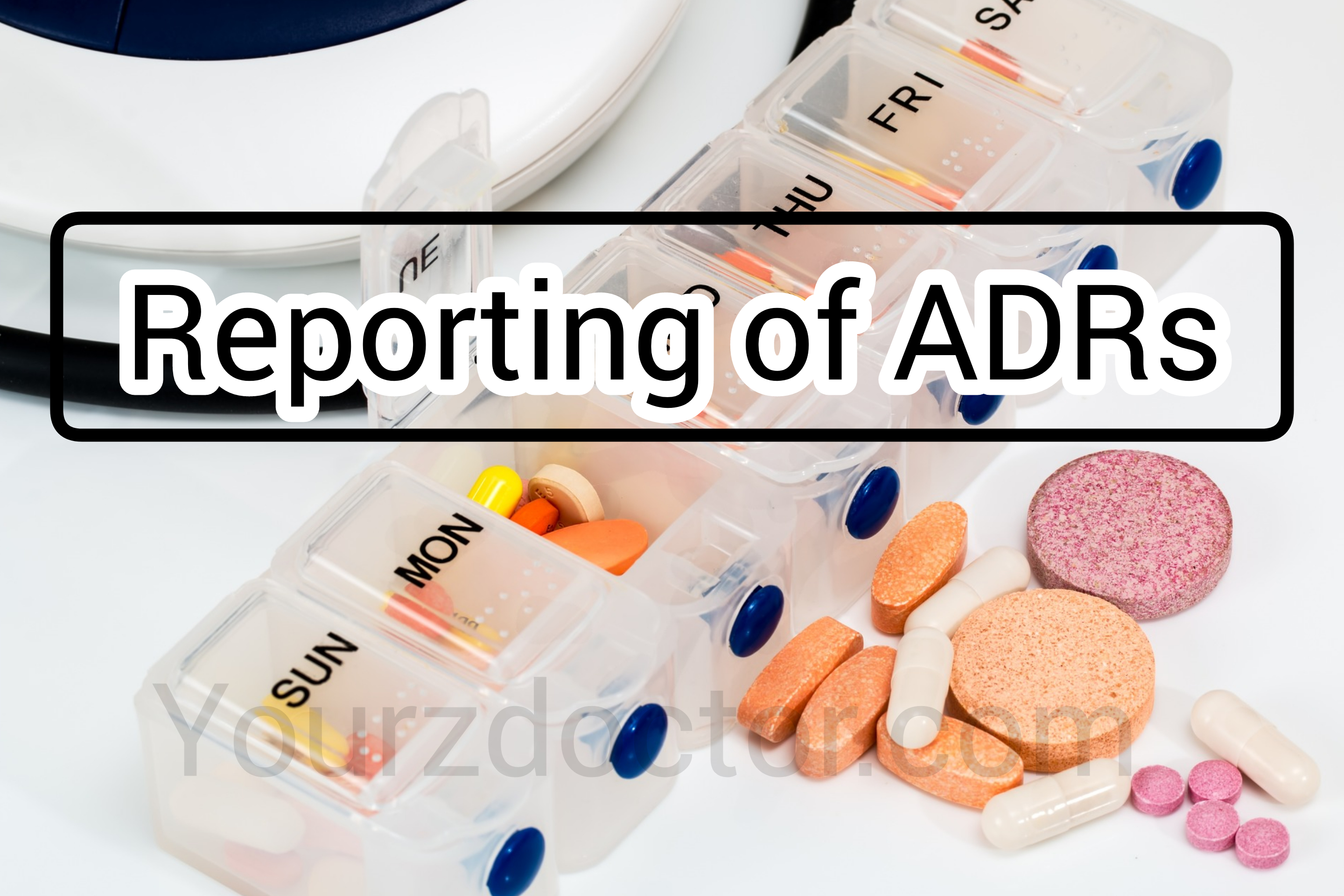Drug can cause injury or death by ADRs. ADRS may be produced due to
•medication error
•undetermined factors
•product quality defects
•ADRs may be avoidable or unavoidable
There all may lead to injury or death.
Initially it was thought that the drugs
are safe. In 1961 Dr.MC bride wrote a letter to the lancet (journal).
“ I am observing the increased frequency
with short limbs of new born and it seems this is due to thalidomide “
Types of Reporting of ADRs
1)spontaneous Reporting of ADRs
2)Case Reporting of ADRs
3)Analysis of secular trend of ADRs
5)Cohort studies for ADRs
A)prospective cohort studies
B)retrospective cohort studies
6)Case controlled studies for ADRs
7)cross sectional studies for ADRs
Spontaneous Reporting of ADRs:
It is the most common process of reporting
ADRs in which reports are not collected systemically.
Newly marketed drugs has black inverted
arrow this means that the drug is newly marketed and under a strict surveillance
to observe unknown ADRs. This sign usually last for 2 years or may be longer.
In 1964 yellow card scheme was introduced
in UK through which ADRs are reported. But only public officers can report patients
are not allowed to report.
But in 2005 patients can also report. Every
person ( physician, patient, nurse, or pharmacist)
can report any ADRs that may be mild or sever.
The conformation of ADRs whether it is
actually happened is not necessary. Suspection
is enough, conformation is not necessary.
This is good for generating hypothesis
where the claimed ADR may prove right of false.
Report all ADRs occur in pregnant women
and babies. If you observe or suspect the specific ADR this is an ethical responsibility
to report to the regulatory authority.
This type of ADRs reporting is known as
spontaneous reporting.
Advantages of spontaneous reporting:
•through spontaneous reporting we can report
the ADRs throughout the life of the product.
•in spontaneous reporting we can report
ADRs of prescribed drugs, herbs, and OTC
drugs.
•spontaneous reporting is cheap and less
expensive and easily operate able way of reporting
•Spontaneous reporting are good for generating
hypothesis and signals.
Disadvantages of spontaneous reporting:
•under reporting is the biggest limitation.
•detecting an adverse event and differentiating
from other diseases this is not any easy task because the same symptoms can resemble
to other diseases.
•quantification can not be used
For example
If 50 people are using a drug . The adverse
event is reported by a single person out 50, and the adverse event is not reported
among the rest 49. This adverse event reported by a single (1 of 49) is neglected
not be tested. This frequency is called quantification.
•usage of a drug product may be restricted
or can be withdrawn from the market depending upon the ADR.
The other types of reporting of ADRs are explained in other blog.
For case reporting of ADRs click here
For analysis of secular trends click here
For cohort studies click here
For prospective cohort studies click here
For retrospective cohort studies click here
For case controlled studies click here
For cross sectional studies click here
Learn more
Searching Tags
How we report ADRs?
Explain the reporting of ADRs
What is the reporting of ADRs?
How ADRs cause injury or death?
Types of reporting of ADRs
How many types of reporting of ADRs?
What is spontaneous reporting of ADRs?
What is yellow card scheme?
Advantages of spontaneous reporting of
ADRs
Disadvantages of spontaneous reporting of ADRs






0 Comments